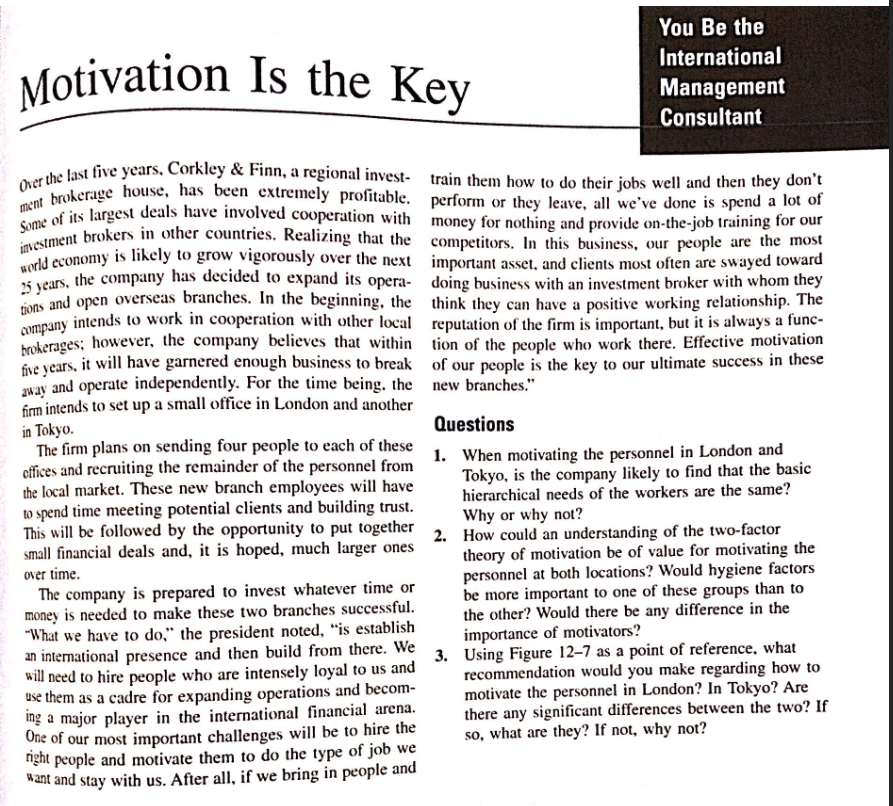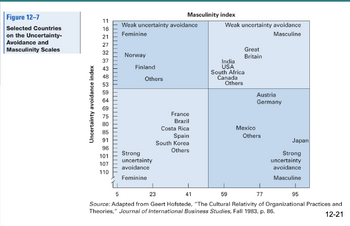Use Attached paragraph top answrer questions When motivating the personnel in London and Tokyo, is the company likely to find that the basic hierarchical needs of the workers are the same? Why or why not? How could an understanding of the two-factor theory of motivation be of value for motivating the personnel at both locations? Would hygiene factors be more important to one of these groups than to the other? Would there be any difference in the importance of motivators?
Use Attached paragraph top answrer questions
When motivating the personnel in London and Tokyo, is the company likely to find that the basic hierarchical needs of the workers are the same?
Why or why not?
How could an understanding of the two-factor theory of motivation be of value for motivating the personnel at both locations? Would hygiene factors be more important to one of these groups than to the other? Would there be any difference in the importance of motivators?
Using Figure 12-7 as a point of reference, what recommendation would you make regarding how to motivate the personnel in London? In Tokyo? Are there any significant differences between the two? If so, what are they? If not, why not?

Step by step
Solved in 5 steps

Here is the requested 12-7 image! Thank you!


